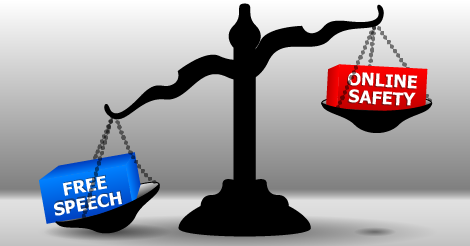 Last week, the US Supreme Court ruled that the Facebook rants of a particular man did not amount to criminal threats – reversing the judgement of lower courts. The man in question had made a series of violent threats against his wife (with whom he was undergoing a separation) and others, often using the lyrics of the rapper Eminem.
Last week, the US Supreme Court ruled that the Facebook rants of a particular man did not amount to criminal threats – reversing the judgement of lower courts. The man in question had made a series of violent threats against his wife (with whom he was undergoing a separation) and others, often using the lyrics of the rapper Eminem.
This will be hailed as a victory for supporters of unregulated speech on social media around the world, including those in Australia. In light of this, it is important to examine the exact circumstances of this case, the unique position on free speech in the United States, and how such actions would be viewed under Australian law.
This particular ruling relates to a case on the border line between freedom of speech, which is protected under the First Amendment to the US Constitution, and a type of speech known in US law as “true threats” which is one of the categorical exceptions under which the US courts have found the First Amendment doesn’t apply. In US law a threat made in jest does not count as a “true threat” and there for such comments would retain there first amendment protection.
The question, in this particular case, was whether the rants count as a jest or as a true threat. The legal question related to how one decides that, and specifically whether it should be determined objectively or subjectively. That is:
(a) based on the subjective intent of the person who posted it (i.e. what they actually meant)
or
(b) when that is the objective view of a reasonable person (i.e. would a regular member of the public reading it consider it a jest or a threat?)
The US position is peculiar internationally and allows significant harm to be caused under the guide of freedom of speech. In the rule is based on subjective intent, then it might be enough for someone to say “I was only joking” or “I didn’t mean it, I just did it for the lols” in order to circumvent the law. This would make laws in this area ineffective.
In this particular case, the content posted (rap lyrics) included disclaimers that what was said was fictitious and posted as an exercise of his first amendment rights. This is more explicit than claiming after the fact that it was a joke. Such statements not only explicitly suggest an alternatively subjective intent, but can affect the reasonable person test under the objective approach. The question is, does such a disclaimer mean that objectively the threat is reduced (i.e. a reason person would know not to take it seriously), or is that a red herring, and simply a way for the person to make threats and take out insurance against any repercussions? In which case a reasonable person would ignore the disclaimer, specially if it was their life that was on the line.
The use of such disclaimers is a feature of “Hate 2.0” where hate pages on Facebook use such a disclaimer, claiming not to be racist, in order to confuse platform administrators and prevent their page being removed. Under time pressure, platform administrators often accept the overt statement that it isn’t hate speech, rather than looking at the nature of the content itself. You can read more about this in the original paper on the subject of Antisemitism 2.0 (2008), and in our report into Anti-Muslim hate (2013).
In the case of criminal sanctions, when a person can be deprived of their liberty, a higher barrier is needed than that used when deciding whether or not to remove the content. There is a need for a mens rea (a mental element of intent), but in cases such as these the test for recklessness seems appropriate (as one of the US Judges suggested). This would mean a person doesn’t have to actually intend to put a person in fear of serious harm, it would be enough if they acted recklessly without regard to the fact that their actions were likely to put a reasonable person targeted in this way in fear of serious harm. The test is objective as it doesn’t ask whether the person in question was put in fear, but rather, whether a reasonable person in their positions could reasonably be expected to be fearful.
In the case of a threat with a disclaimer, the question then is whether the person making the threat and posting such a disclaimer (a) meant the threat and intending to carry it out, or (b) intending to, and actually did, put the person being targeted in fear of harm. Either of those should be sufficient for some form of criminal sanction to apply, but the penalties might be different.
In Australia, the situation is much simpler and clearer. The use of an internet connection to “menace, harass or cause offence” is a criminal offence under s.474.17 of the Commonwealth Criminal Code. It can be prosecuted by the Commonwealth Director of Public Prosecutions, as can be seen here. OHPI believes the speech should be judged on its impact and the harm it does or can do, not on the supposed intent of the poster.
You can read OHPI’s publications on cyberbullying here, and on serious trolling here.
